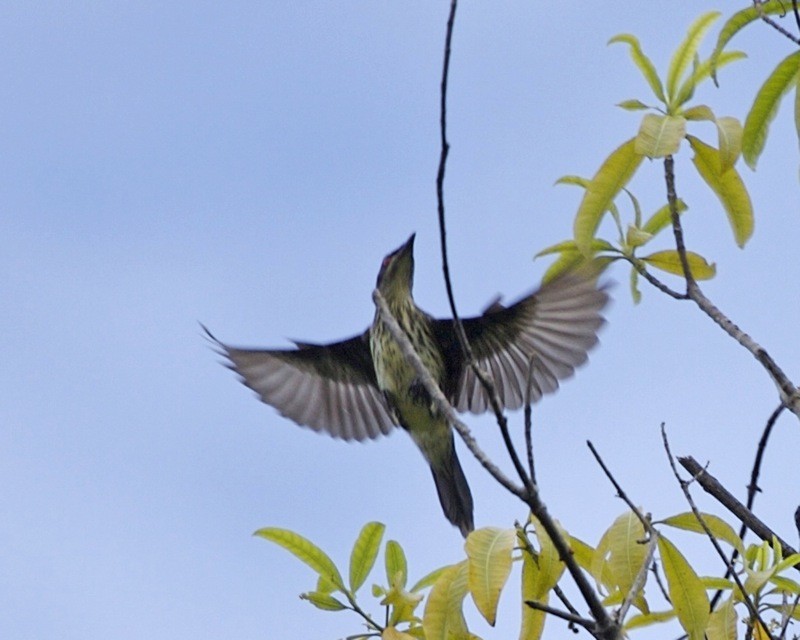Metallic Starling
A species of Pacific Starlings Scientific name : Aplonis metallica Genus : Pacific Starlings
Metallic Starling, A species of Pacific Starlings
Botanical name: Aplonis metallica
Genus: Pacific Starlings
Content
Description General Info
 Photo By Lip Kee , used under CC-BY-SA-2.0 /Cropped and compressed from original
Photo By Lip Kee , used under CC-BY-SA-2.0 /Cropped and compressed from original Description
The adult has brilliant red eyes, a long forked tail and green-glossed black plumage. Immatures are pale below with dark streaks. 
Size
25 cm
Life Expectancy
20 years
Nest Placement
Tree
Feeding Habits
Metallic Starling's diet consists of nectar, fruits, and insects, foraged with opportunistic zeal. Noted for its frugivorous tendencies, metallic Starling exhibits diverse feeding behaviors adapting seamlessly to different food sources.
Habitat
Metallic Starling primarily dwells in tropical rainforest regions, favoring areas such as coastal woodlands and mangroves. These birds are also known to inhabit forest edges, clearings, and gardens, indicating a certain adaptability to modified environments. They show a preference for lower elevations, typically residing below 1000 meters, but have been observed at heights exceeding 3000 meters in certain regions. Additionally, metallic Starling may frequent fruiting trees in savanna landscapes, displaying their diverse habitat utilizations.
Dite type
Frugivorous
General Info
Feeding Habits
Bird food type

Fruit
Behavior
They are very social and flocks of them build messy suspended globular nests in tall rain forest trees where they breed, possibly only during the wet season (north-west monsoon, October–March) (observed at Kokopo, East New Britain Province, 2016). They are not fearful of humans and their activity on the ground below, being well separated from them by altitude, but a loud noise will see them fly out in a tight formation, circle, then return to their nests. Their movement is very fast. During the early part of the 20th century, a flock (or flocks) were seen to migrate during August to Dunk Island in far north Queensland, where they mate, preparing messy globular nests for their young which hang from tall trees. There they remain until April, whereupon they make their return journey to New Guinea. They are also seen in other areas of Queensland including Kuranda in the Atherton Tablelands, and Mossman Gorge. 
Species Status
Not globally threatened.
Scientific Classification
Phylum
Chordates Class
Birds Order
Perching birds Family
Starlings Genus
Pacific Starlings Species
Metallic Starling